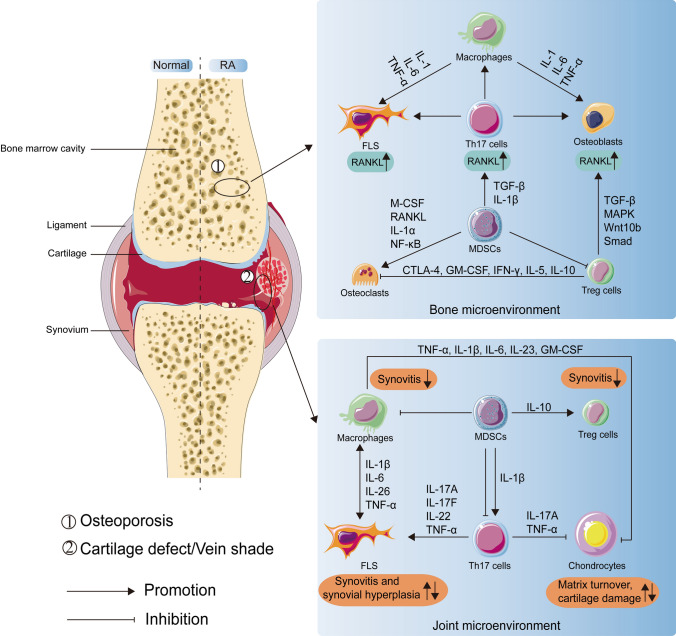Fig. 2.
The role of MDSCs in the bone microenvironment and joint microenvironment when rheumatoid arthritis. In the bone microenvironment, MDSCs, with the help of other immune cells and cytokines, directly or indirectly interact with osteoclasts and osteoblasts to induce bone loss. The immune cells include Th17 cells, Treg cells, macrophages, and the cytokines include pro-osteoclastogenesis factors (TGF-β, IL-1β, M-CSF, RANKL, IL-1α, NF-κB, IL-6, TNF-α) and anti-osteoclastogenesis factors (CTLA-4, GM-CSF, IFN-γ, IL-5, IL-10, TGF-β, MAPK, Smad, Wnt10b). In the joint microenvironment, on one hand, MDSCs play a pro-inflammatory role by promoting Th17 cells. And various pro-inflammatory cytokines are involved, including IL-1β, IL-6, IL-26, IL-17A, IL-17F, IL-22, IL-23, TNF-α, and GM-CSF. On the other hand, MDSCs paly an anti-inflammatory role through the interaction with Th17 cells, Treg cells, macrophages, chondrocytes. Besides, anti-inflammatory factors such as TNF-α, IL-1β, IL-6, and IL-10 are involved in the interaction

